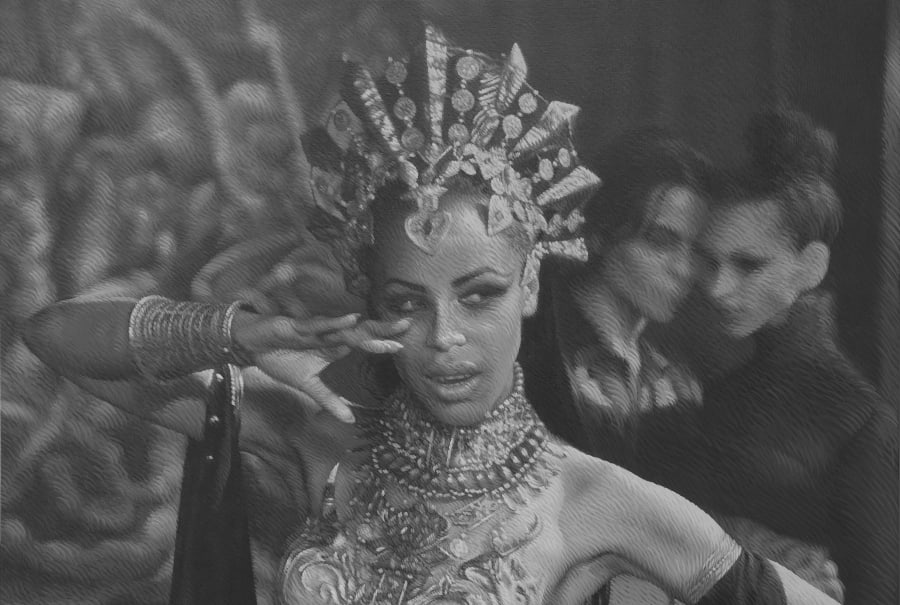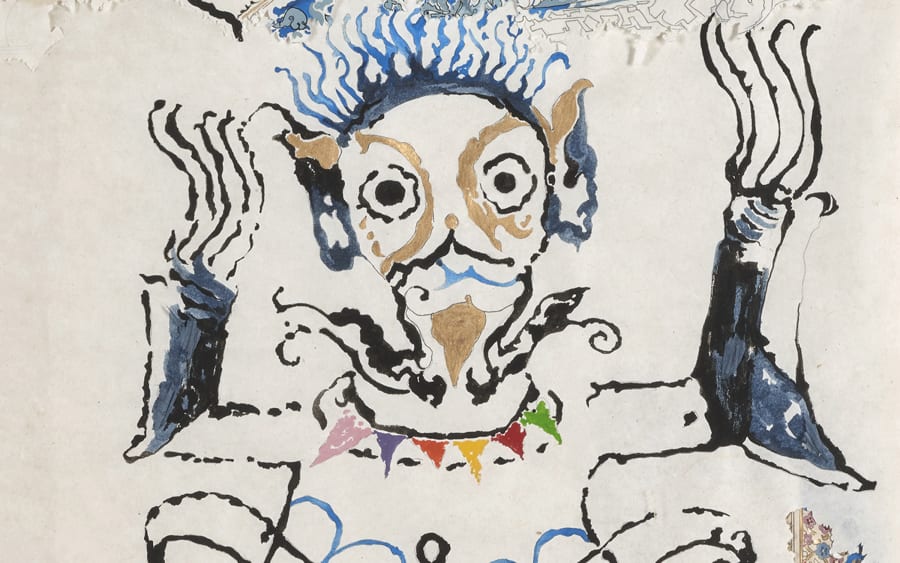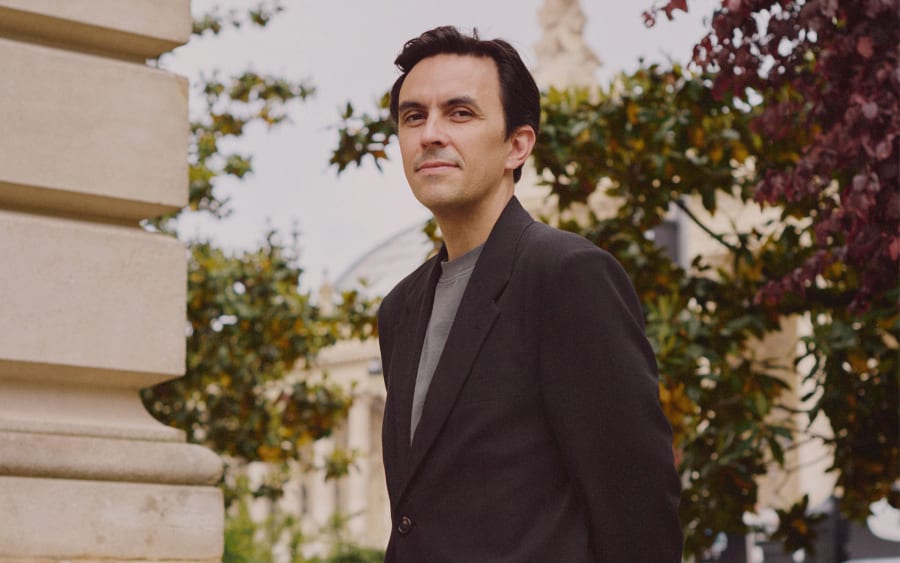Few personalities are as emblematic of the French art world as Jennifer Flay. Director of the Foire Internationale d’Art Contemporain (FIAC) from 2003 to 2021 and president of Art Basel Paris’s advisory board until the end of the 2024 edition, she has witnessed – and contributed to – Paris’s resurgence as a hub for contemporary art. For decades, Flay’s keen eye and talent for uniting artistic voices have made her an indispensable figure in Parisian art circles.
Yet Flay’s story begins far from the banks of the Seine. We met for coffee just days before the launch of Art Basel Paris at the newly renovated Grand Palais. She had recently received an award from her alma mater, the University of Auckland in New Zealand, where she was born and studied art history. ‘It means almost as much to me as my Légion d’Honneur,’ she says. While her roots in New Zealand remain strong, her bond with France is a lifelong love affair.
What first ignited Flay’s artistic passion? ‘Raphaël, Ingres, Matisse, Picasso ... then Dada,’ she says without hesitation. Credit goes in part to Michel Sanouillet, a Visiting French Scholar at Auckland University who introduced her to 20th-century art during her student days. But her influences weren’t limited to European masters and avant-garde movements. The art of New Zealand’s Indigenous Māori people – the tattoos, weavings, sculpted woods, mother-of-pearl inlays, and jade tools and ornaments – left an indelible mark. The country’s breathtaking landscapes played a role too: ‘Growing up in New Zealand, you can’t help but develop an awareness of the sublime,’ she says.
A French Government Scholarship brought Flay to France, where she followed in Sanouillet’s footsteps to the Côte d'Azur, where he led the 20th Century department at the Université de Nice. It was 1980, and the local art scene was then dominated by the conceptual artist known simply as ‘Ben.’ Through this connection, Flay landed a position as assistant to gallerist Catherine Issert in the picturesque village of Saint-Paul-de-Vence. ‘What struck me was the direct relationship we had with both the artworks and the artists,’ she recalls. ‘Leo Castelli would summer in nearby Mougins and drop by the gallery for lunch every day. He’d casually discuss Jasper Johns, Andy Warhol, Roy Lichtenstein... That’s when I realized galleries weren’t just selling art – they were helping to write art history.’
After a brief sojourn in Berlin exploring the New Fauves movement, Flay returned to Nice. There, she connected with future art world luminaries such as Nicolas Bourriaud, Jean de Loisy, and Bernard Blistène. She also met Edouard Merino, who would later co-found the Air de Paris gallery, and whose father Francis was a key patron of the Fluxus movement, which had one of its defining moments in nearby Villefranche-sur-Mer.
Flay’s next move brought her to Paris. From 1985 to 1987, she honed her skills at Daniel Templon’s gallery. ‘We were showing top-tier American artists. I frequently traveled to the States, visiting Jean-Michel Basquiat’s studio and the Factory, and spending time with Keith Haring, Carl André, Lawrence Weiner, Robert Longo, Roy Lichtenstein - and Richard Serra, with whom I was particularly close’ she recounts. This was followed by a 3-year stint at Galerie Ghislaine Hussenot, where she helped bring ambitious projects by Christian Boltanski, Mike Kelley, and Isa Genzken to life. ‘That experience cemented my understanding that gallerists are often the ones who form the strongest ties with artists. I knew I wanted to play a role in making today’s art visible.’
Despite warnings from industry veteran Yvon Lambert about the timing, Flay took the plunge and opened her own gallery in 1991. She started in the Marais district, and 5 years later moved to a larger space in the emerging 13th arrondissement. ‘I never confined myself to a particular aesthetic,’ she explains. ‘I was interested in connecting with individual artists and work that resonated deeply.’ Her roster read like a who’s who of contemporary art: Felix González-Torres, Dominique Gonzalez-Foerster, Xavier Veilhan, Claude Closky, Michel François, Karen Kilimnik, John Currin, and Zoe Leonard. The gallery also became a nexus for a close-knit group of collectors, including Marcel Brient, known for his discerning eye and unwavering support.
Injuries from a severe car accident in 1999 ultimately led to the gallery's closure. A few years later, Jennifer Flay made her next big move: helming FIAC alongside Martin Bethenod. Together, they orchestrated a remarkable turnaround. ‘In 2003, everyone thought FIAC was a lost cause,’ Flay notes. ‘I initially said no, but gradually came around. My Anglo-Saxon background gave me a fresh perspective. I approached it from the inside, as a way to bring together artists, gallerists, and collectors. Working with Martin was crucial – his experience at the Ministry of Culture gave him invaluable institutional knowledge.’
The pair re-engaged museums that had long distanced themselves from FIAC and implemented bold strategies. In 2006, FIAC made a triumphant return to the Grand Palais after a stint at Porte de Versailles. They even secured a presence in the Louvre’s prestigious Cour Carrée.
‘We had to show the world that we existed,’ says Flay. ‘Major collectors like François Pinault and Bernard Arnault supported us with their voluntary and deliberate presence. In the joyful and uninhibited atmosphere of the Cour Carrée, collecting careers, like that of Joseph Kouli, were born. Guillaume Houzé, still in his twenties, joined us to create a sector aimed at supporting young galleries, the Lafayette Sector. Young galleries asserted themselves, like Marion Dana, Jocelyn Wolff, Crèvecœur and Marcelle Alix.’ The French scene was renewing, and Paris became a new pole of attraction for art in Europe. Before long, blue-chip international galleries were setting up shop in the French capital, and major private foundations were opening their doors.
In 2021, Paris+ par Art Basel succeeded FIAC at the Grand Palais Éphémère and Flay became president of the advisory board for the new fair. In this transition period, she continued to showcase cutting-edge contemporary art. In the fall of 2022, she curated a group exhibition, 'De toi à moi. We Rise and Fall Together.' at the Fondation Fiminco in Romainville, a new art district on the edge of Paris, with an energy reminiscent of Rue Louise Weiss 20 years earlier. Today, Romainville hosts the Komunuma gallery collective, the Magasins Généraux art center, and artist residencies such as Poush and Artagon. As her tenure with the newly minted Art Basel Paris concludes in 2024, Flay shows no signs of slowing down. She is eager to dive back into research and continue advising the Fondation Fiminco, with an eye toward expanding its reach in the United States and establishing artists’ residencies.
We wrap up our chat with a telling anecdote: ‘Back in the mid-80s, I was in New York and someone asked where I worked. When I said “Paris,” they looked at me incredulously. France wasn’t exactly on the international art map back then,’ Flay laughs. ‘But I’d like to think that answer wouldn’t raise eyebrows today. That we – all of us who believed in the Paris scene – have really moved the needle.’
Anaël Pigeat is an art critic, editor-at-large at The Art Newspaper, contributor to Paris Match, and an independent curator.
Published on October 18, 2024.


